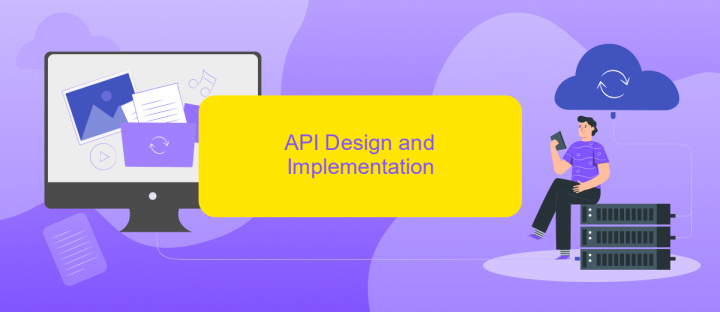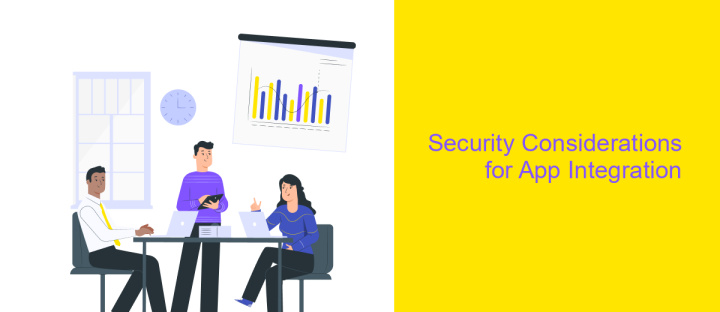App Integration API
In today's rapidly evolving digital landscape, seamless communication between applications is crucial for enhancing productivity and user experience. App Integration APIs serve as the backbone for this connectivity, enabling diverse software systems to interact and share data effortlessly. This article explores the significance of App Integration APIs, their role in streamlining business operations, and how they empower developers to create more cohesive and efficient digital ecosystems.
Introduction to App Integration APIs
App Integration APIs play a crucial role in the digital ecosystem by enabling different software applications to communicate and work together seamlessly. These APIs allow developers to connect various services, enhancing functionality and streamlining workflows. By leveraging app integration APIs, businesses can reduce redundancy, improve efficiency, and deliver a more cohesive user experience.
- Facilitates data exchange between disparate systems
- Enables automation of complex processes
- Enhances scalability and flexibility of applications
- Supports real-time data synchronization
- Improves user experience by connecting multiple platforms
As technology continues to evolve, the demand for robust app integration APIs is growing. These APIs not only help in bridging gaps between different applications but also empower organizations to innovate and adapt quickly to changing market needs. By investing in app integration APIs, businesses can ensure their systems remain agile and responsive, paving the way for future growth and success.
Key Concepts and Terminology

App Integration APIs are designed to enable seamless communication between different software applications, allowing them to work together efficiently. These APIs provide a set of protocols and tools for building software applications, facilitating the exchange of data and functionalities between disparate systems. Key concepts include endpoints, which are specific paths within an API that determine how requests are processed, and authentication, which ensures that only authorized users can access the API. Understanding these concepts is crucial for developers looking to create robust integrations.
Terminology in app integration often involves terms like SDKs (Software Development Kits), which are collections of software tools and libraries that help developers create applications for specific platforms. Middleware is another important term, referring to software that acts as a bridge between different applications or services. Services like ApiX-Drive simplify the integration process by offering pre-built connectors and automation tools, enabling users to connect various apps without extensive coding. This streamlines workflows and enhances productivity by reducing the manual effort required to synchronize data across platforms.
API Design and Implementation

Designing and implementing an App Integration API requires careful consideration of both functionality and user experience. The API should offer a seamless way for applications to communicate, ensuring data consistency and reliability. It is crucial to prioritize security, scalability, and ease of use to accommodate diverse client needs and evolving technological landscapes.
- Define clear API objectives and use cases to guide development.
- Ensure robust authentication and authorization mechanisms.
- Design RESTful endpoints with intuitive naming conventions.
- Implement comprehensive error handling and informative responses.
- Document the API thoroughly to facilitate developer adoption.
By adhering to these guidelines, developers can create an API that not only meets current requirements but also adapts to future demands. Continuous testing and feedback loops are essential to refine the API, ensuring it remains a valuable asset for application integration. Ultimately, a well-designed API enhances interoperability and drives innovation across platforms.
Security Considerations for App Integration

When integrating applications through an API, ensuring robust security is paramount. API integration exposes sensitive data and functionalities, making it a potential target for cyber threats. Therefore, implementing comprehensive security measures is essential to protect both the application and its users.
Firstly, authentication and authorization must be prioritized. Ensure that only authorized users have access to the API by implementing strong authentication protocols, such as OAuth or API keys. Additionally, encrypt data in transit using HTTPS to prevent interception by malicious entities.
- Implement rate limiting to prevent abuse and denial-of-service (DoS) attacks.
- Regularly update and patch API components to address vulnerabilities.
- Use input validation to mitigate injection attacks and ensure data integrity.
- Conduct regular security audits and penetration testing to identify and rectify weaknesses.
Finally, maintain detailed logging and monitoring of API interactions. This enables the detection of suspicious activities and provides valuable insights in the event of a security breach. By taking these precautions, you can significantly enhance the security posture of your app integration and safeguard against potential threats.


Best Practices and Common Use Cases
When integrating APIs, it's essential to follow best practices to ensure seamless operation and security. Start by thoroughly understanding the API documentation and setting up a robust authentication mechanism. Ensure that your integration is efficient by minimizing the number of requests and handling errors gracefully. Logging and monitoring are crucial for maintaining the integration's health, allowing you to identify and resolve issues promptly. Additionally, consider using versioning to manage changes and updates effectively.
Common use cases for API integration include automating workflows, enhancing data synchronization, and enabling third-party services to communicate. For instance, businesses often integrate CRM systems with marketing platforms to streamline customer data management. Tools like ApiX-Drive can simplify this process by offering pre-built connectors and a user-friendly interface, making it easier to connect various applications without extensive coding. By leveraging these integrations, organizations can improve efficiency, reduce manual errors, and focus on core business activities.
FAQ
What is an App Integration API?
How does an App Integration API work?
What are the benefits of using an App Integration API?
How can I start using an App Integration API for my business?
What should I consider when choosing an App Integration API?
Routine tasks take a lot of time from employees? Do they burn out, do not have enough working day for the main duties and important things? Do you understand that the only way out of this situation in modern realities is automation? Try Apix-Drive for free and make sure that the online connector in 5 minutes of setting up integration will remove a significant part of the routine from your life and free up time for you and your employees.

